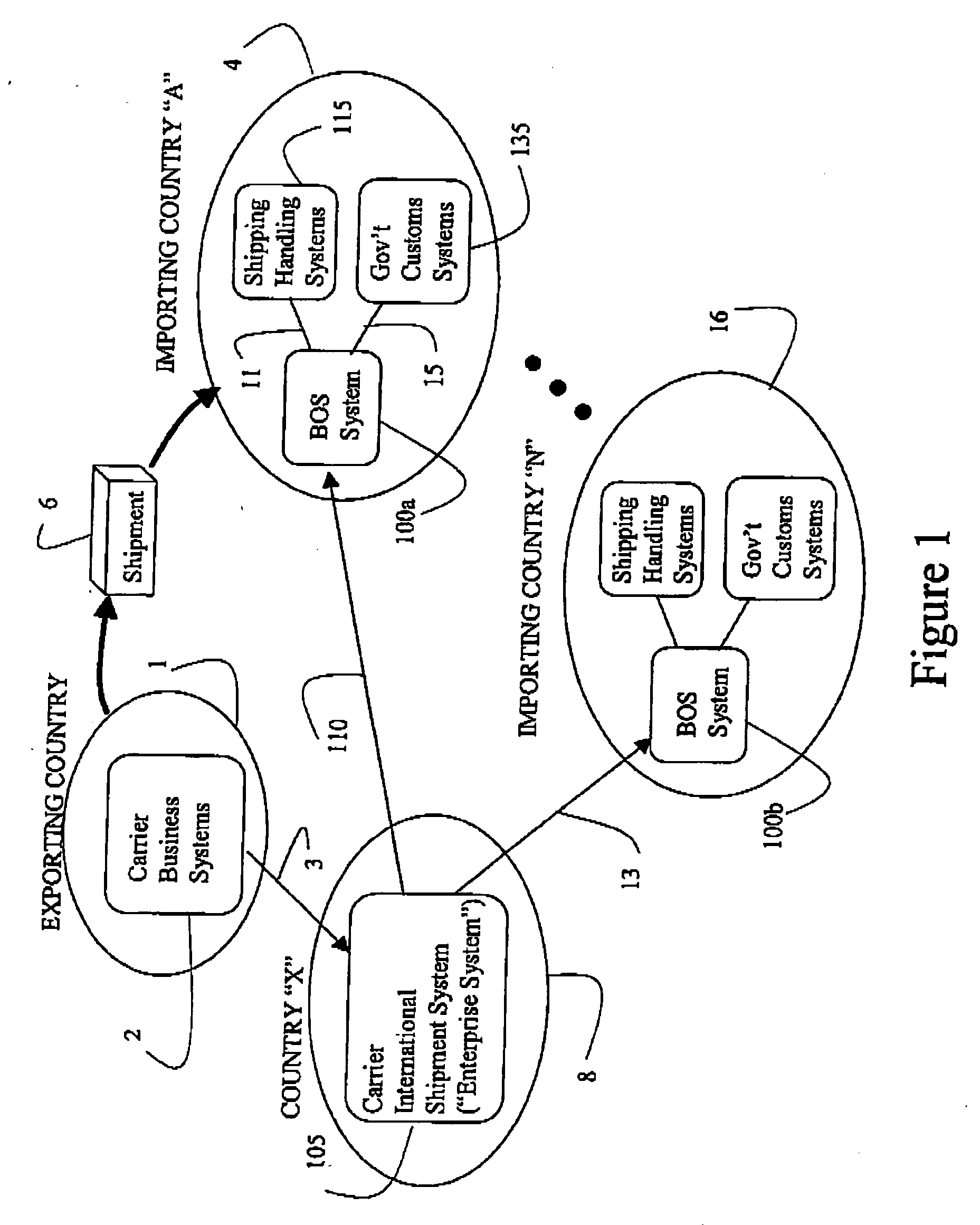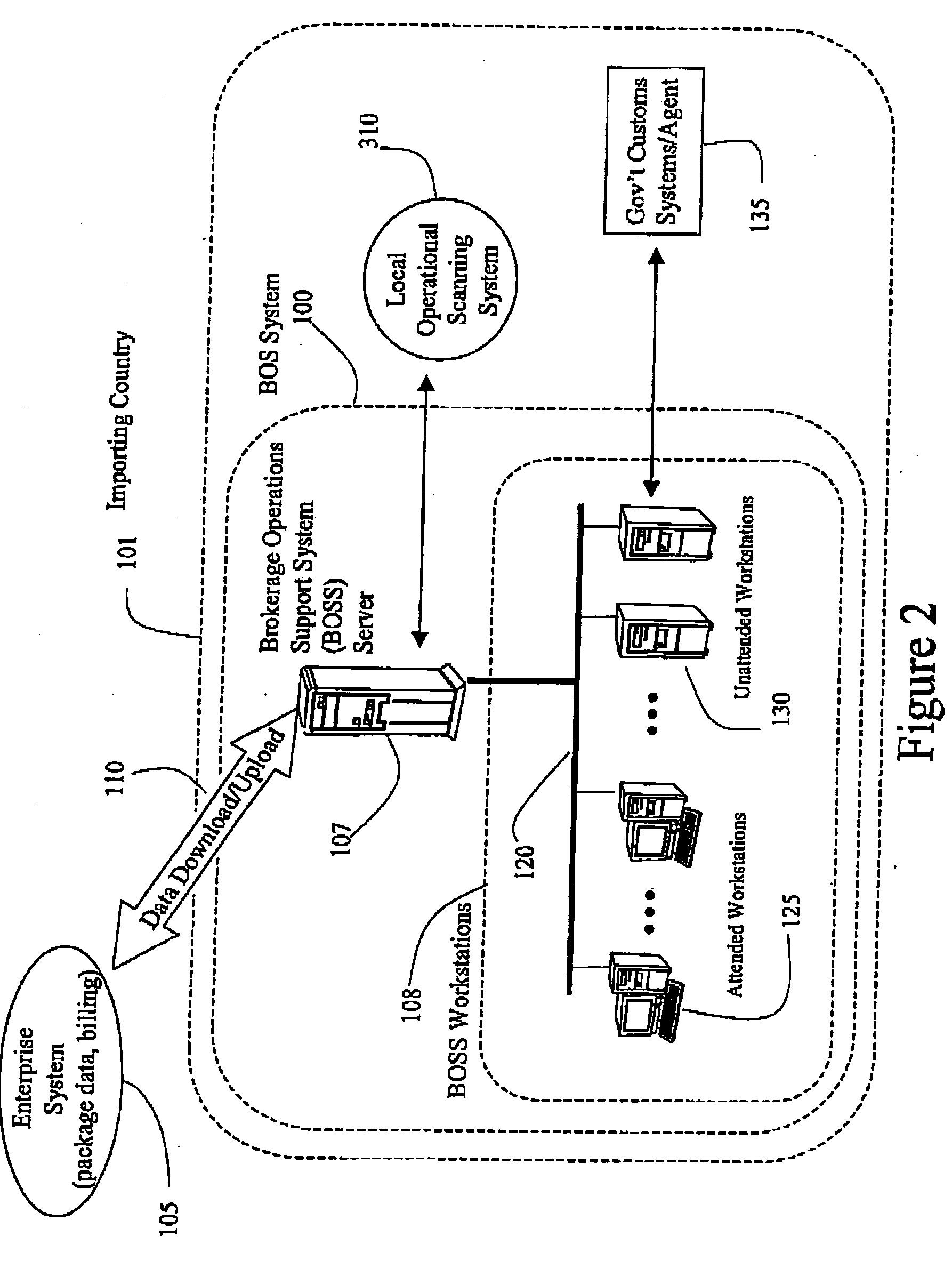Systems and methods for international shipping and brokage operations support processing
a technology of international shipping and brokage, applied in the field of computer systems supporting international customshouse brokerage and shipping functions, can solve the problems of complicated process of determining the cost of importing goods (i.e., costs other than the purchase price of goods), complicated process of importing goods, etc., and achieve the effect of minimizing delays and storage of goods
- Summary
- Abstract
- Description
- Claims
- Application Information
AI Technical Summary
Benefits of technology
Problems solved by technology
Method used
Image
Examples
example
[0104] The rating process operates in accordance with locally programmed rules. The flexibility of the rating process is illustrated in an exemplary rating process shown in FIGS. 10a and 10b. Rating begins 460 when a workstation retrieves shipment information 461 from the BOSS Server. The workstation uses rules for processing shipping information in the desired manner. In this illustration, the workstation defaults to processing the shipment automatically 462. In certain cases, the user could override this by invoking assisted rating 463. Once automatic rating is started, the workstation begins by reading the initial commodity on the shipment list 464. Based on the part number and / or description, the commodity is compared to the rating profiles 465. When the best match is determined, a confidence level is calculated. Other factors impacting the confidence level are the matching of other fields, including whether the importer or exporter fields match the consignee or shipper. Once th...
PUM
 Login to View More
Login to View More Abstract
Description
Claims
Application Information
 Login to View More
Login to View More - R&D
- Intellectual Property
- Life Sciences
- Materials
- Tech Scout
- Unparalleled Data Quality
- Higher Quality Content
- 60% Fewer Hallucinations
Browse by: Latest US Patents, China's latest patents, Technical Efficacy Thesaurus, Application Domain, Technology Topic, Popular Technical Reports.
© 2025 PatSnap. All rights reserved.Legal|Privacy policy|Modern Slavery Act Transparency Statement|Sitemap|About US| Contact US: help@patsnap.com



